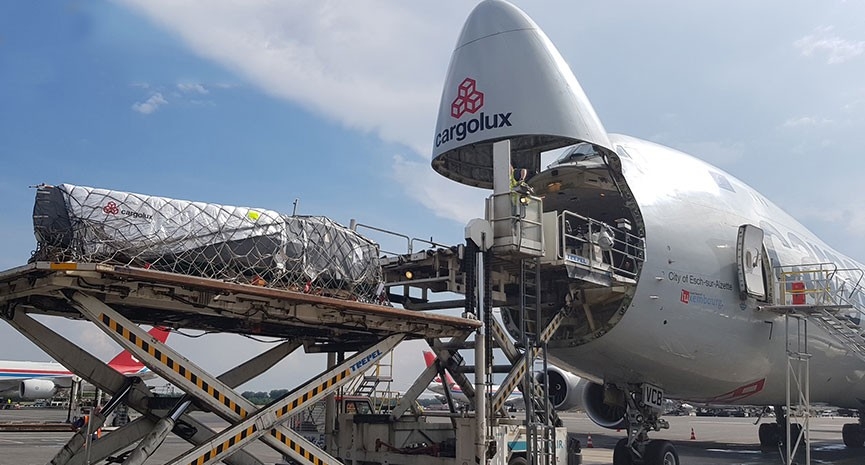Cargolux pioneers solar-powered transportation project
Luxembourg-based Cargolux will provide transportation for a prototype solar-powered boat, between Luxembourg and Calgary, Canada, ahead of an Arctic expedition.

June 11, 2018: Luxembourg-based Cargolux will provide transportation for a prototype solar-powered boat, between Luxembourg and Calgary, Canada, ahead of an Arctic expedition.
The Solar Arctic project was initiated by DreamTime, a non-profit organization which deals with environmental awareness and climate issues. This expedition, undertaken by French navigator Anne Quéméré, is a solo journey in a prototype solar-energy propelled boat across the mythical Northwest Passage that links the Atlantic to the Pacific. This completely autonomous undertaking is an attempt to complete a 3,500 kilometre trip between Tuktoyaktuk, an Inuit village in Northwestern Canada and Pond Inlet, an Inuit village on Baffin Island.
This is an exciting new project for Cargolux to support as it is fully in line with the company’s “lean and green” philosophy and its efforts to promote sustainable business within the industry.“Cargolux is proud of supporting the Solar Arctic project, which, like the Solar Impulse project, is an effort to explore new and innovative paths in the transportation industry”, explains Moa Sigurdardottir, head of corporate communications, Cargolux.
This is not the first time Cargolux supports a ground-breaking solar-powered expedition. In 2013 and 2015, Cargolux successfully transported the Solar Impulse airplane on two of its missions. For its first endeavour, the “Across America Tour”, Cargolux brought the aircraft from Payerne in Switzerland to the NASA Ames Research Center at Moffett Airfield in the United States, from where Solar Impulse flew across the country. For the second, more ambitious “World Tour”, Cargolux ensured the solar airplane was successfully flownfrom Switzerland to Abu Dhabi. The Solar Impulse aircraft and the solar-powered boat used for the Arctic Solar project were both conceived and designed by Swiss visionary Bertrand Picard.


